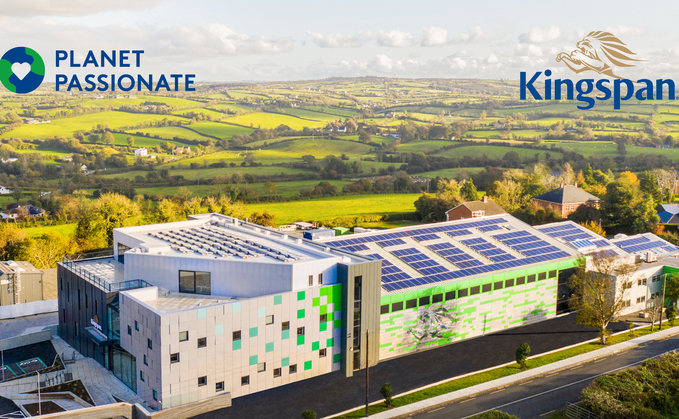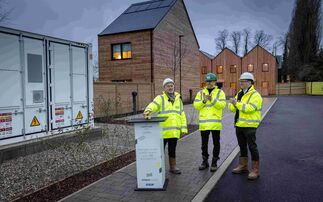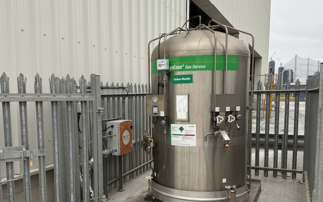
Industry Voice: Kingspan Panels' procurement director Mark Broderick explains why the firm has invested in pioneering hydrogen steelmaker H2 Green Steel
It is hard to imagine human civilisation without buildings. Ever since we made the transition from hunting and gathering to agriculture, we have built permanent structures in which to live and work.
Given that we can't do without buildings, we need to find ways of reducing their environmental impact. The International Energy Agency (IEA) estimates that buildings and construction are responsible for nearly 40 per cent of total direct and indirect CO2 emissions.
Much of the conversation to date has centred on the carbon emissions of buildings during their operational phase. This is certainly a priority. The energy it takes to heat, cool and light buildings accounts for 28 per cent of global CO2 emissions.
The solutions are relatively clear. We need to accelerate the transition to renewable sources of energy. And we need to reduce the amount of energy that buildings consume in the first place. Improvements in the thermal efficiency of building envelopes using the fabric first approach, in combination with rapid and wider deployment of technologies such as heat pumps and other renewable heat sources, are the only coherent route to meeting the energy-efficiency targets necessary to combat climate change.
But if we are to make buildings truly sustainable, we must look at their whole life carbon footprint. Before any building even opens its doors, it has already generated a huge amount of CO₂ during the construction phase. This is known as embodied carbon. It is estimated that the construction of buildings generates 11 per cent of global CO₂ emissions.
Much of this embodied carbon stems from the production of materials like glass, vinyl, drywall and, in particular, steel and concrete. Steel production alone accounts for 25 per cent of Europe's industrial CO₂ emissions.
This is a complex challenge, but it is a vital one, because only about a quarter of the infrastructure required for 2050 exists today. We urgently need to move towards a more circular economic model and to reduce the embodied carbon in supply chains.
Global companies can play an important role in rising to the challenge. At Kingspan, we have just set ambitious new Science-Based Targets, in line with the IPCC scenario of keeping global warming to 1.5 degrees above pre-industrial levels. By 2030 we aim to reduce the emissions we generate directly from our activities and energy use (Scope 1 and 2) by 90 per cent, and our value chain emissions (Scope 3) by 42 per cent.
We know that to achieve these targets, we will need to work closely with our entire supply chain. That includes making strategic investments in companies that are developing new technologies.
To give an example, our sector leading insulated panels significantly improve the thermal efficiency of buildings, but unless we also look at the emissions produced in making these products in the first place, we will only be solving one part of the puzzle.
That's why we have invested in H2 Green Steel (H2GS), which is pioneering a steel production process that replaces coke and coal with hydrogen gas produced from renewable energy.
The result is steel that generates only about five per cent of the CO₂ emissions associated with traditional blast furnace steel makers. By using green steel, we could reduce the embodied carbon in our insulated panels by more than 45 per cent.
We are the first building materials company in the world to make a commitment to procure green steel at scale. We anticipate that about 25 to 30 per cent of the steel we buy will eventually come from H2GS. Our investment in H2GS is one part of our mission is to accelerate towards a more sustainable future built environment.
These challenges are not unique to the construction industry. Across every sector, we urgently need to move toward a model that reduces emissions right across the value chain. This kind of system-wide approach is essential if we are to avert climate disaster.
Mark Broderick is procurement director for Kingspan Panels.
This article is sponsored by Kingspan.







